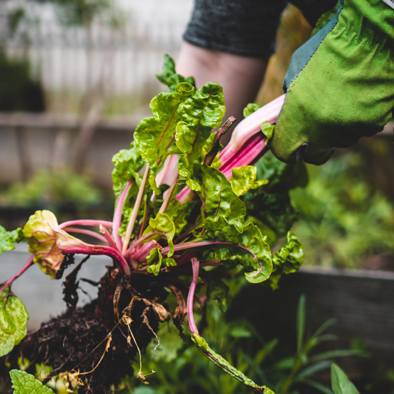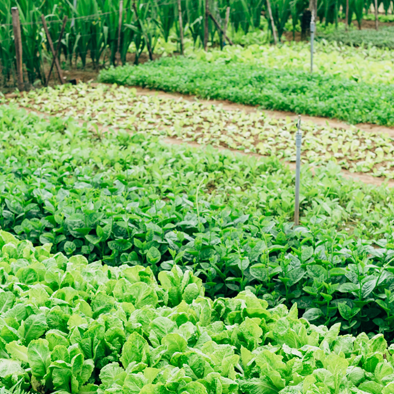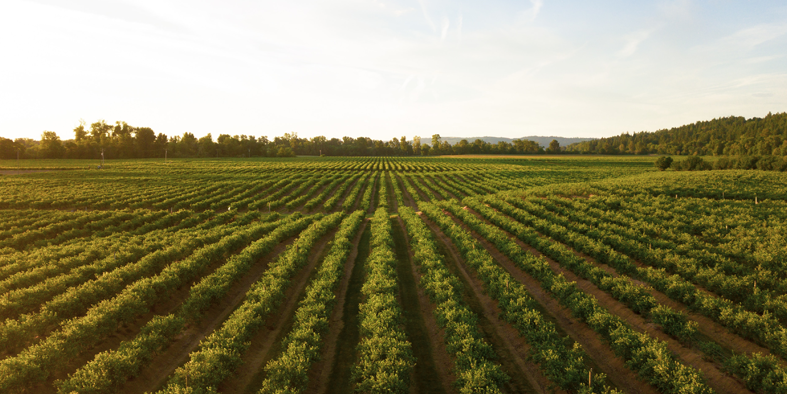To Organic or Not Organic… Responsible Food Sourcing Beyond the Label
September is Organic Awareness Month, a month to recognise all the positive contributions that the organic sector, and maintaining organic standards, does for the environment and society as a whole.
What is Organic?
Products and farmers with an organic label signal that they use methods more harmonious with nature than those used by mainstream, industrial farming. In the case of produce, these include using only all natural fertilisers, having a strictly controlled list of pesticides (almost all naturally occurring) with lower acceptable residue levels, and maintaining farming practices that protect bio-diversity. With meat and fish, organic standards include strict animal welfare policies, and regulations around livestock feed and medicines.
Customers are increasingly concerned with sourcing products from responsible suppliers, and buying organic can be a quick, albeit pricier, way of doing that. That label is an easy way to feel comfort that the food purchased is being provided according to certain standards. At the same time when customers feel the squeeze on their wallets, one of the first things to go is paying more for more “premium” food, including organic meat and produce. According to Mintel, the organic market was one of the largest causalities of the 2008 recession contracting by 18% between 2007 – 2012. It is expected to feel a similar squeeze as a result of the current cost of living crisis.
So it’s lucky that organic farming and produce is not the only ‘good & responsible’ option out there. In a perfect world, every farm and food producer would carry a tick of approval that demonstrates they work in a way that does not conflict with the natural world and that they are a “good” producer. Of course, like every beautiful thing in this life, it is not that simple.


A farmer’s perspective
I used to work at a vertical farm that aimed to grow salad with no impact on the environment. Our whole raison d’être was sustainable growing – we used 100% renewable energy, significantly less water than traditional growing methods, were certified carbon negative (which meant we offset more than we emitted), were a B Corp, and even had fully recycled and recyclable packaging. However, we couldn’t be certified organic mostly because we used a standard fertiliser that included synthetic nitrogen.
This fertiliser is made from fossil fuels, and according to the Soil Association is responsible for about 20% of food production related carbon emissions. We used it because the salad just wouldn’t grow without it. When we used organic approved fertilisers, yields were terrible, and we couldn’t get on top of crop disease. We were constantly trialling other options, and hopefully at some point an organic alternative would have worked out, however when I left that wasn’t going to happen any time soon.
I know of many similar experiences from other producers who also don’t carry the organic label. It’s typically not because they don’t believe in the values and ethos that organic certifying bodies espouse. I have yet to meet a farmer that wasn’t committed to preserving the quality of their land and product for generations to come. Rather in the choice to adopt fully organic practices, it often comes down to commercials, the reality of resulting yields, market selling price and achievable volumes: it just doesn’t stack up to switch out a particular fertiliser or pesticide that their method of production relies upon. And when it comes down to ‘sustainability’, commercials form a key part of the equation, alongside of health, environmental and social concerns.
There are ongoing debates around how much better for the environment and health organic farming, especially produce farming, actually is than conventional farming methods. The fact that organic farming usually results in lower yields means that more land is required, which in turn can have a negative impact on bio diversity and carbon emissions. Less herbicides means that the land has to be tilled more, which again means more carbon emissions. Even though synthetic pesticides are limited under organic rules, naturally occurring poisons / pesticides can be used which can have equally harmful residue levels. The most simple conclusion to come to is that there are pros and cons to both methods, and ultimately the most sustainable form of future food production should look like a balance between industrial farming methods that ensure enough food is being produced to supply growing populations and ‘alternative’ more carbon friendly methods that use natural materials that don’t damage the environment, maintain bio-diversity, and aren’t reliant on chemicals that cause have negative impacts on health.
But in the meantime, what’s a customer to do when they want to buy ‘good’ products from ‘responsible’ suppliers, they are confused about what’s what, there’s a squeeze on their wallets, and the whole thing is such a quagmire because it’s really not black & white? What can we do as food suppliers to help support our customers to make more educated choices?

3 top tips to put into action
Below are some tips to share with customers to encourage responsible consumption beyond the organic label:
1. Focus on quality meat & fish: It is especially important to look for labels certifying responsible practices when it comes to meat and fish consumption. Make sure your suppliers have animal welfare policies & responsible sourcing policies in place, which not only ensures the animals are treated more humanely but also reduces the risk of over farming and fishing. Our sister companies Campbell Brothers and Direct Seafoods would be very happy to provide advice on up to date policies relating to specific breeds or species, check out their most recent market reports by clicking on the links below.
a.Campbell Brothers Autumn 2023 Market Report
b.Direct Seafoods Autumn 2023 Market Report
2. Think about fish seasonality: Seafood seasonality isn’t necessarily in line with climatic seasons, instead it’s when fish are at peak harvest and most abundant. When fish are consumed out of season, stocks can be negatively impacted, and you are more likely buying from distant sources, raising the ‘true cost’ of the meal with unnecessary transport. Again, Direct Seafoods are a great resource on this, as is this handy What’s in Season guide.
3. Tell your customers about benefits of following the sun: Do you have tomatoes on your menu in winter? Be transparent about the fact they probably come from further afield, like Morocco… and that the carbon impact of growing them in a glasshouse in Britain in January would be significant, as would the impact on their wallet. Include that kind of information on your website, or menu if you have that kind flexibility. The more we can inform our customers of how and why their food comes to them, the better choices they can make. As always, Oliver Kay’s Crop Report can help with that kind of information.
And if you’d like more control over how your ingredients travel, on our portal you can request that you don’t source any products where air freighting is required, this will eliminate that option for anyone placing orders on your behalf.
We’d love to talk to you more about our tips in more detail and suggest more bespoke ideas for any of your particular challenges. To do so please don’t hesitate to reach out to any of our team, or to me at oliviaobrien@bidfood.co.uk.
A blog by Olivia Obrien. Olivia is our new National Account Manager, supporting with our new sustainability focused initiatives.
Follow us on social media for regular updates on Instagram, LinkedIn, Twitter and Facebook


